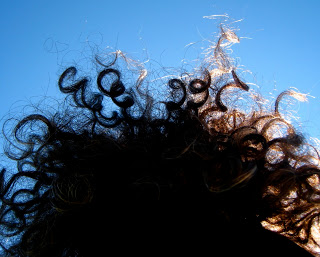November 1st is right around the corner and with that date comes cooler weather, fall foliage and the seemingly never ending battle between rake and leaf. It also marks the end of the year-long grace period for airlines to clear their systems of old reservations made before TSA's Secure Flight requirements took effect last year.
This means that Secure Flight will not approve the issuance of a boarding pass if the required information is not provided. Required information being your name, date of birth, and gender as it appears on your recognized government ID.
Secure Flight is a behind the scenes watch list matching program that fulfills a key recommendation of the 9/11 Commission by assuming responsibility of watch list matching from individual airlines. By establishing a consistent watch list matching system, Secure Flight enhances aviation security and more effectively facilitates air travel for passengers.
Secure Flight watch list matching takes a matter of seconds to complete, and providing this data enables passengers to print their boarding passes at home and or at an airline kiosk and greatly reduces the likelihood of watch list misidentification.
Blogger Bob has talked about Secure Flight here many times in the past and you can view all of those posts here on our TSA Blog, or you can visit our Secure Flight webpage. Here are answers to Secure Flight questions we’ve received through Talk to TSA:
What does the November 1 airline compliance date mean for passengers? The November 1 date requires passengers to provide complete Secure Flight passenger data when booking reservations so TSA can conduct watch list matching and approve airlines to issue a boarding pass. To avoid unnecessary delays and prevent misidentifications, passengers should provide complete Secure Flight data when booking airline travel, whether they have booked directly with the airline, a travel agent or an online booking site.
Will passengers still be able to book a ticket last-minute within 72 hours of a flight? Yes. TSA’s Secure Flight program can conduct watch list matching for passengers up until the time of the flight. Passengers will be prompted to provide Secure Flight information when booking travel. For reservations booked on short notice, or within 72 hours of the scheduled flight departure time, airlines must submit the required passenger information as soon as the reservation is made.
What happens if a passenger has an existing reservation for travel after November 1, 2010 and did not provide complete Secure Flight data when booking his or her flight? TSA advises passengers to contact their airlines or booking sources prior to arriving at the airport to ensure they have provided their full name, date of birth, gender, and Redress number (if applicable) as part of their reservations. While TSA’s watch list matching takes a matter of seconds and can be completed up until the time of departure, passengers should be aware that a boarding pass will not be issued until the airline submits complete passenger data to Secure Flight.
What if a passenger’s boarding pass and ID do not match exactly? Secure Flight and travel document checking are both critical security functions, yet they serve different purposes at different points in the security process. Secure Flight is a behind-the-scenes watch list matching process that takes place before checkpoint screening. Secure Flight asks that passengers enter their name as it appears on their government ID and passengers should strive to stay consistent between the name on their ID and the information they provide when booking their reservation. Once a passenger receives their boarding pass, the Secure Flight process is already complete.
At the security checkpoint, TSA strives to ensure your identification and boarding pass are authentic and validate you are who you say you are. Small differences in the name on the boarding pass and ID, like middle initials, should not impact your travel. It is not uncommon for the information printed on boarding passes to differ slightly from the information on IDs, depending on the boarding pass printing practices of individual airlines. Information requirements are explained in greater detail on Secure Flight’s web page.
John S. Pistole
TSA Administrator
As part of the "Talk to TSA" initiative TSA reviews the questions and comments that come in and we plan to use the TSA blog to address some of the more common themes we are seeing - both the favorable and not so favorable. Security is a shared responsibility and we are always looking to hear from you.






